Dubai transforms itself faster than any city on Earth, turning desert sand into a futuristic metropolis that defies both gravity and convention. What started as a modest trading port along Dubai Creek has evolved into an architectural playground where designers push the boundaries of what’s possible with steel, glass, and unlimited ambition.
From record-breaking skyscrapers to artificial islands shaped like palm trees, Dubai’s skyline reads like a catalog of human engineering achievements. Here is a list of 15 architectural wonders in Dubai that showcase why this city has become synonymous with impossible made possible.
Burj Khalifa
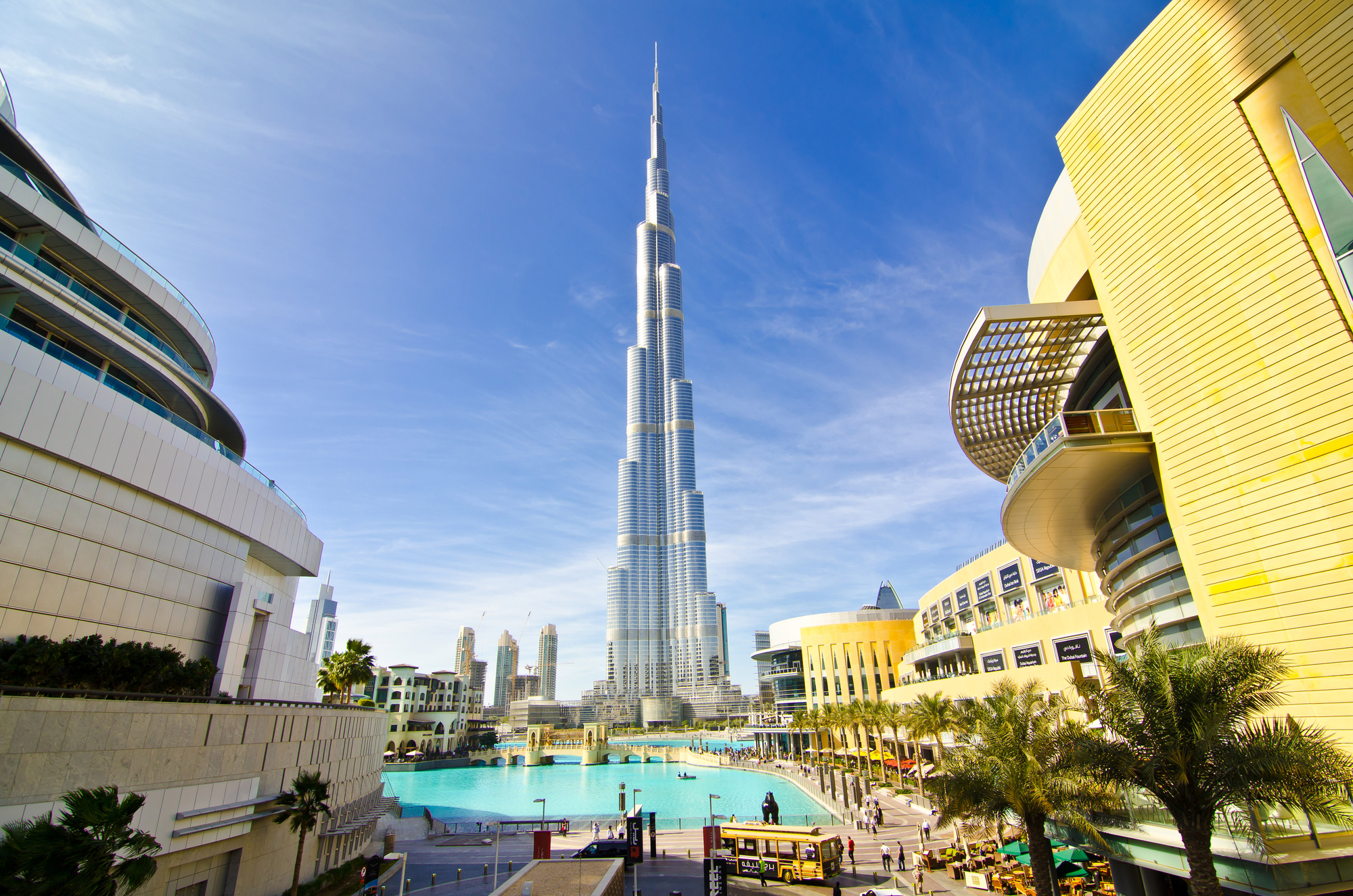
Standing 2,717 feet tall across 163 floors, this needle-thin tower redefined what constitutes a supertall skyscraper and creating Dubai’s most recognizable landmark. The building’s Y-shaped design reduces wind loads while maximizing views from its luxury residences, corporate offices, and observation decks.
Its LED facade transforms the tower into a massive digital canvas for light shows that can be seen from space. The engineering required three separate construction systems working in harmony—a concrete core, steel frame, and advanced elevator system capable of traveling at 40 miles per hour.
Burj Al Arab

This sail-shaped hotel rises 1,053 feet from an artificial island connected to the mainland by a private bridge, creating Dubai’s most photographed architectural silhouette. The building’s double-membrane facade protects against the desert heat while its interior features a 590-foot atrium that could fit the Statue of Liberty with room to spare.
Each of its 202 suites occupies two floors with floor-to-ceiling windows offering panoramic gulf views. The helipad, famously used for tennis matches and supercar photoshoots, sits 689 feet above sea level with no safety barriers.
Like Travel Pug’s content? Follow us on MSN.
Dubai Frame

This 500-foot golden rectangle frames views of both old and new Dubai through what locals call the world’s largest picture frame. The structure’s glass-bottom sky deck creates a vertigo-inducing walk 492 feet above ground level while offering 360-degree views across the emirate.
Inside, interactive exhibits chronicle Dubai’s transformation from a fishing village to a global metropolis through immersive displays and historical artifacts. The frame’s golden exterior changes color throughout the day, reflecting the desert sun while maintaining its bold geometric silhouette against the sky.
Emirates Towers
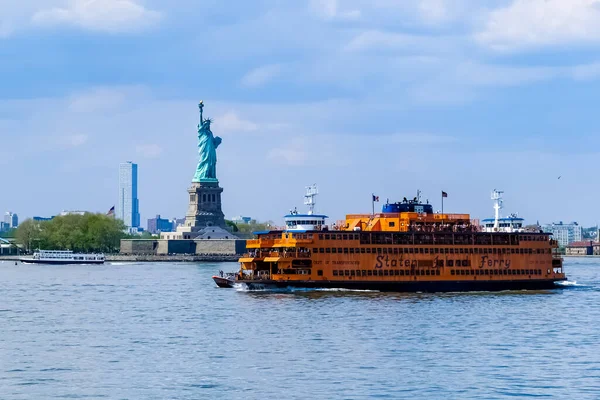
These twin towers—1,165 feet and 1,014 feet respectively—feature triangular floor plates that create distinctive geometric facades while maximizing office space efficiency. The aluminum and glass exterior incorporates traditional Islamic geometric patterns into a decidedly modern aesthetic.
A sky bridge connects the towers at the 51st floor, housing exclusive restaurants and meeting spaces suspended 700 feet above Sheikh Zayed Road. The towers’ LED lighting systems transform them into vertical billboards after dark, displaying everything from corporate logos to national celebrations.
Dubai International Airport Terminal 3
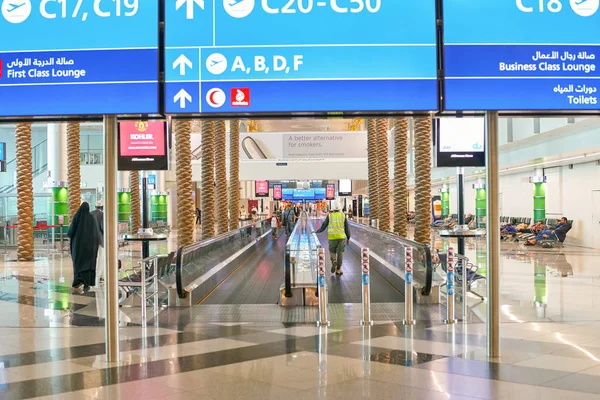
Covering 1.7 million square feet under a single roof, this terminal ranks as one of the world’s largest buildings by floor area while processing over 75 million passengers annually. The building’s flowing curves eliminate traditional corners and straight lines, creating an interior landscape that guides passenger flow through intuitive wayfinding.
Its soaring ceiling reaches 130 feet at its highest point while natural light filters through skylights spanning the terminal’s full length. The structure required over 100,000 tons of steel and incorporates advanced acoustics that maintain conversation-level noise despite housing hundreds of shops and restaurants.
Like Travel Pug’s content? Follow us on MSN.
Atlantis The Palm

This $1.5 billion resort anchors the artificial Palm Jumeirah island with a design inspired by the mythical Atlantis while incorporating Middle Eastern architectural elements. The central arch spans 340 feet between the resort’s twin towers, housing luxury suites with underwater views of the resort’s massive aquarium.
The complex includes 1,548 rooms, a water park with record-breaking slides, and an aquarium containing 65,000 marine animals. Its pink facade and distinctive silhouette make it visible from the International Space Station.
Dubai Opera

This dhow-shaped performing arts center transforms from theater to concert hall to banquet space through innovative movable seating and acoustic systems. The building’s glass facade curves like a traditional wooden dhow sail while its interior features Arabian-inspired geometric patterns rendered in contemporary materials.
The venue’s flexible design accommodates everything from opera and ballet to rock concerts and comedy shows through advanced technical systems. Its waterfront location in Downtown Dubai creates dramatic reflections across the adjacent canal system.
Cayan Tower
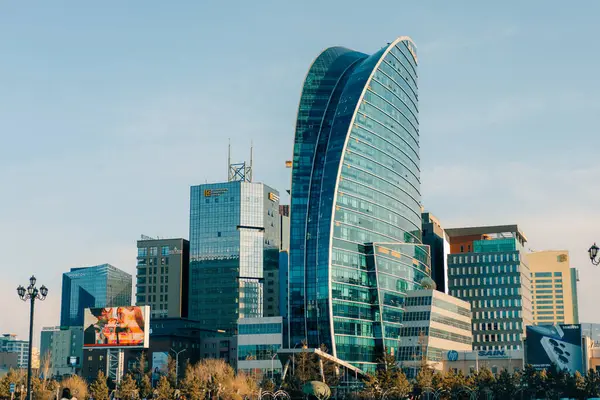
This 1,010-foot residential tower twists 90 degrees from bottom to top, creating a helical form that reduces wind loads while maximizing views for each apartment. The rotation occurs gradually across 75 floors, with each level turned 1.2 degrees from the one below it.
This engineering feat required a central concrete core strong enough to support the twisting loads while maintaining structural integrity during Dubai’s occasional seismic activity. The building’s curved glass facade reflects light differently throughout the day, creating an ever-changing appearance from street level.
Like Travel Pug’s content? Follow us on MSN.
Dubai Marina
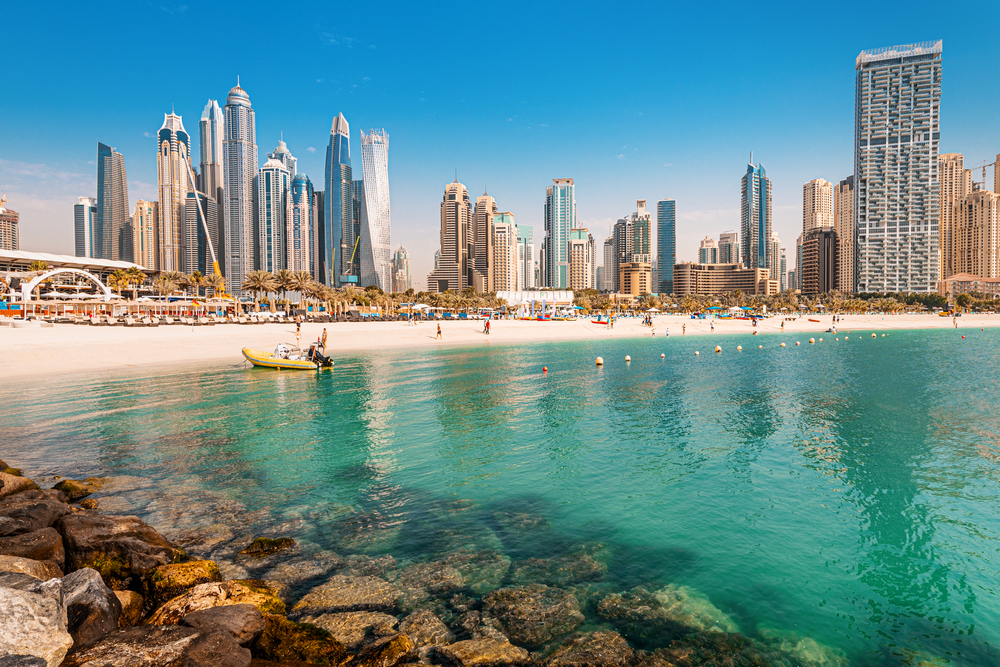
This artificial canal city houses the world’s largest man-made marina development, featuring over 200 high-rise towers arranged around a two-mile waterway carved from desert sand. The master plan creates a pedestrian-friendly environment despite the density, with ground-level retail and restaurants connecting towers through shaded walkways.
Several towers exceed 1,000 feet in height, creating a canyon-like effect that provides natural wind cooling along the waterway. The marina accommodates over 1,000 boats while serving as home to nearly 120,000 residents in one of the world’s most densely populated square miles.
Al Habtoor City
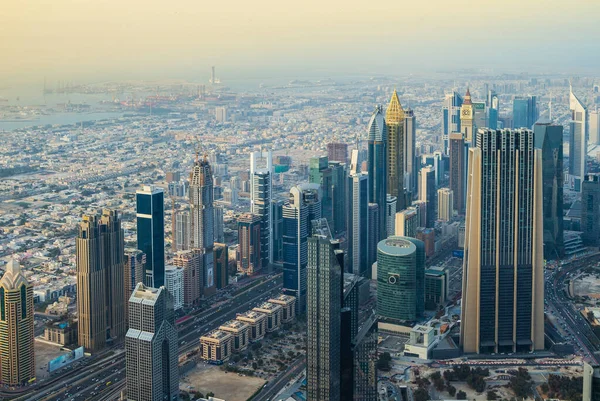
This integrated development combines three towers with a theater, shopping mall, and extensive public spaces connected by bridges and elevated walkways. The complex’s design incorporates water features throughout, including fountains, canals, and reflection pools that provide natural cooling in the desert climate.
The towers’ facades feature a distinctive diamond pattern that reduces solar heat gain while creating visual interest through changing light patterns. The development’s pedestrian network connects to Dubai’s water taxi system and metro network.
Dubai Design District
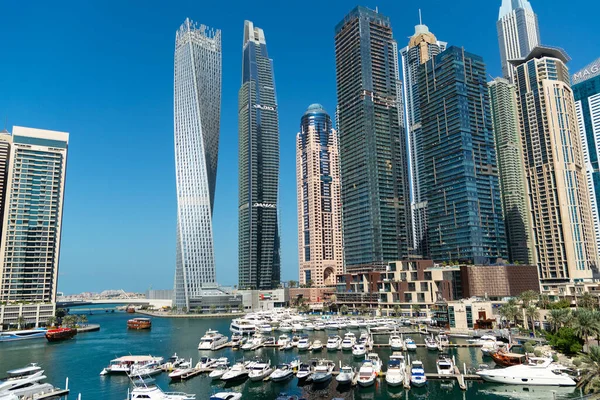
This creative quarter features buildings that bend and twist to create dramatic geometric forms while housing design studios, galleries, and fashion houses. The development’s centerpiece, the Institute Building, cantilevers dramatically over a public plaza while its facade incorporates traditional Islamic patterns in a contemporary interpretation.
The district’s master plan encourages pedestrian movement through shaded courtyards and covered walkways that protect against the desert sun. Several buildings incorporate green walls and sustainable cooling systems that reduce energy consumption by up to 40%.
Like Travel Pug’s content? Follow us on MSN.
Museum of the Future
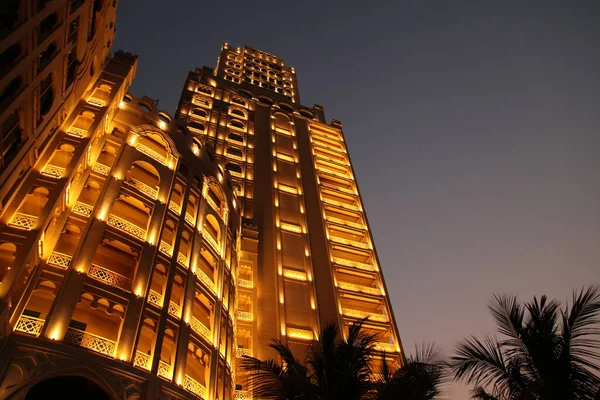
This torus-shaped structure appears to float above its base while its facade displays Arabic calligraphy spelling out quotes about the future from Dubai’s ruler. The building contains no straight lines or right angles, requiring advanced digital modeling and construction techniques to achieve its complex geometry.
Its stainless steel facade incorporates over 1,000 pieces, each uniquely shaped and positioned to create the overall form. The interior houses interactive exhibits exploring artificial intelligence, climate change, and space exploration through immersive technologies.
Dubai World Trade Centre
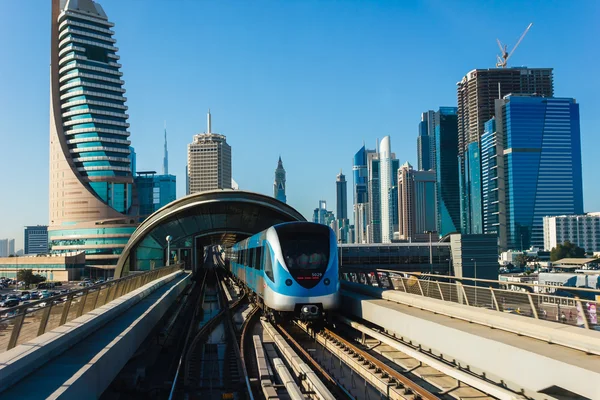
This historic tower, completed in 1979, established Dubai’s reputation for ambitious architecture while serving as the emirate’s first supertall building at 489 feet. The building’s design incorporates traditional Arabian architectural elements—including wind towers and geometric patterns—into a modern office tower format.
Its central location and distinctive profile made it Dubai’s primary landmark before the Burj Khalifa’s completion. The surrounding exhibition complex has expanded to include multiple halls and hotels, creating one of the Middle East’s premier business districts.
Dubai Creek Tower
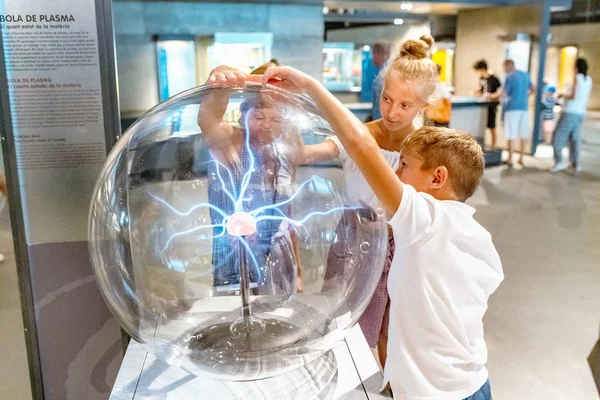
Currently under construction, this observation tower will surpass the Burj Khalifa’s height while serving as the centerpiece of Dubai Creek Harbour development. The tower’s design draws inspiration from Islamic architecture and the lily flower, featuring a series of tapering levels that create viewing platforms at different heights.
Its cable-stayed design eliminates the need for a traditional elevator system, instead using a unique transportation method that follows the tower’s curved profile. The structure will incorporate advanced sustainable technologies, including solar panels and wind turbines, integrated into its architectural form.
Like Travel Pug’s content? Follow us on MSN.
Dubai Miracle Garden

While not a building, this seasonal garden showcases architectural landscaping on an unprecedented scale, featuring over 150 million flowers arranged in massive three-dimensional displays. The installations include full-scale replicas of aircraft, castles, and monuments constructed entirely from living flowers that require precise irrigation and climate control systems.
The garden’s design changes annually, requiring teams of engineers and horticulturists to create new structural frameworks that support millions of plants. The complex operates only during Dubai’s cooler months, demonstrating how architecture can adapt to extreme climates.
Building Tomorrow’s City Today
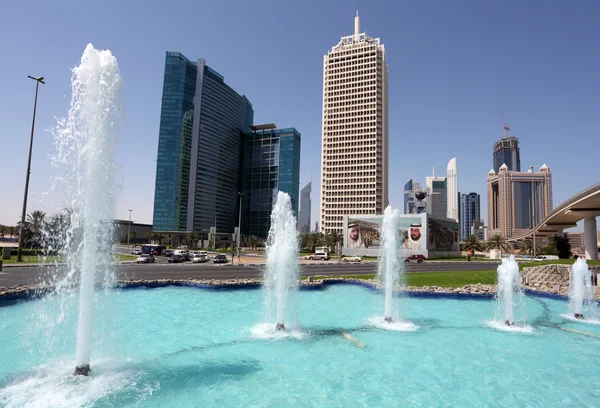
These fifteen architectural marvels represent more than impressive engineering—they embody Dubai’s transformation from desert outpost to global metropolis in just five decades. Each structure pushes technical boundaries while creating spaces that enhance urban life in one of the world’s most challenging climates.
The city’s commitment to architectural innovation continues to drive projects that seemed impossible just years ago, establishing Dubai as a testing ground for tomorrow’s urban solutions. Whether reaching for the sky or carving new coastlines from the sea, Dubai’s architects continue redefining what cities can become.
More from Travel Pug

- 20 Best Beach Towns in the Carolinas
- 13 Destinations Where Tourists Regularly Regret Their Trip
- 20 Things You Actually Get in First Class
- 20 Small Airports With Aviation Museums
- 20 Places in the U.S. That Are Perfect for a Reset Trip
Like Travel Pug’s content? Follow us on MSN.
